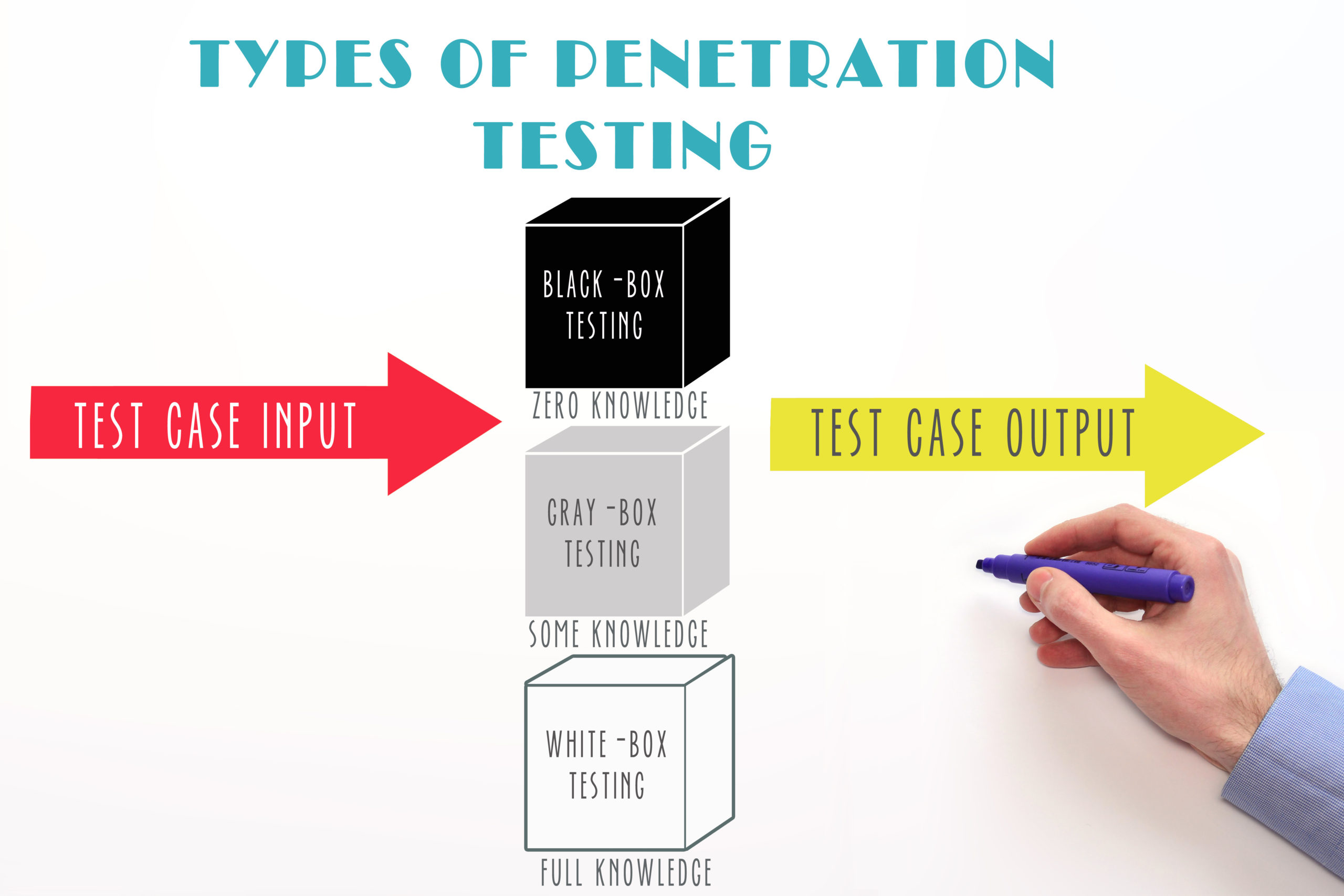Step-by-Step guide on Black Box Testing, White Box Testing and Grey Box Testing Techniques and Types
A testing technique is a method or approach used to evaluate the quality and functionality of a software application. Testing techniques are used to identify defects and errors in the software and to ensure that it meets the Customer & stakeholder's requirements, specifications and expectations. A well-planned testing technique can significantly improve the efficiency of the testing process and identify defects early in the development cycle, thereby reducing the cost of fixing defects later. There are various kinds of testing approaches, in this blog, we will discuss on Black box testing and White box testing techniques with examples.
Black Box Testing Basics
This technique is used to assess the performance of a software application without knowing its internal workings. This testing technique hinges on the principle that the system being tested should be treated as a "black box," and the tester should only focus on the inputs and outputs of the system. This approach helps to identify defects or errors that may occur in the software application without knowing the internal code or design. This type of testing relies on requirement and specification. Considering this Black box testing it can be any software system you want to test such as operating system like window or mac, website like google or safari, database like swagger or even your own application.
Black Box Testing Techniques
Several black box testing techniques are available, but there are a few significant ones that are commonly used black box testing techniques.
Boundary Value Testing: Boundary value testing is a technique of black box testing that plunges in testing the software's behavior at the boundaries of its input domain. The goal of boundary value testing is to ensure that the software holds inputs that are at the limits of its acceptable input range. For example, suppose a software application requires a user to enter a number between 1 and 100. In that case, boundary value testing would test the software's behavior when the user enters 1, 100, and values just above and below these boundary values.
Equivalence Partitioning: Equivalence partitioning is a black box testing method that involves categorizing input data into different groups or partitions, and then testing each group independently to ensure that the software functions correctly. The goal is to shorten the test cases which are required to test the software fully. For example, suppose a software application requires a user to enter their age. In that case, equivalence partitioning would divide the age into different groups, such as under 18, 18-65, and over 65, and test each group separately.
Error Guessing: Error guessing is a black box testing method that involves guessing where errors might occur in the software and testing those areas. The goal of error guessing is to find defects that might not be found using other testing methods. For example, suppose an application has a feature that allows users to upload images. In that case, error guessing might involve testing how the software handles uploading different file formats or large files.
All-pairs testing: All-pairs testing is a software testing technique that aims to achieve high test coverage while reducing the number of test cases needed. The technique involves selecting a set of test cases that cover all possible pairs of input parameters. This can help save time and resources while still ensuring that the software application is thoroughly tested. For example, suppose you are testing a website's search functionality. The search functionality accepts three inputs: search query, category, and date range. To test all possible combinations of these inputs would require a large number of test cases. However, with all-pairs testing, you can select a set of test cases that cover all possible pairs of input parameters. This can help reduce the number of test cases needed while still achieving high test coverage. All-pairs testing is a powerful technique that can help software development teams achieve high test coverage while reducing the number of test cases needed. By selecting a set of test cases that cover all possible pairs of input parameters, all-pairs testing can help save time and resources while still ensuring that the software application is thoroughly tested.
Black Box Testing Types
There are various types of testing techniques that fall under black box testing. These techniques are used to evaluate the software applications by comparing the actual behavior with expected behavior. Some of the commonly used black box testing types are listed below.
Functional testing: This type of black box testing pertains to the functional requirements of a system and is carried out by software testers for example, suppose a banking application requires a user to enter their account number and PIN to access their account. In that case, functional testing would test that the application correctly validates the user's credentials and allows access to the account.
Non-functional testing: This category of black box testing does not pertain to the testing of a particular functionality, but rather focuses on non-functional requirements, for example like performance, scalability, and usability.
1. Performance testing:This testing is used to measure and evaluate the performance of an application under different load conditions. The goal is to ensure that the application can hold the expected user load and still maintain its functionality and response time. This kind of testing is important for ensuring that the application can handle the load it is designed for and can meet the expectations of the users.
Example of Performance Testing: Consider a web-based e-commerce application that allows users to purchase products online. The application is anticipated to drive a huge number of users concurrently, and the response time of the application is a critical factor in providing a good user experience.
2. Scalability Testing:
Scalability testing is a characteristic of a system that refers to its capacity to drive enlarge workload or demands as it grows. In other words, it is the size of a system to accommodate growth or expansion while maintaining its performance and reliability. A scalable system can handle increased traffic, data, and workload without impacting its performance or availability.
Example of Scalability: Consider a popular social media platform such as Facebook. Facebook started as a small social network for college students but has since grown to over 2.8 billion active users worldwide. To accommodate this massive growth, Facebook has had to implement a scalable infrastructure that can handle the increased traffic, data, and workload.
3. Usability Testing:
Usability testing is used to evaluate the ease of use and user-friendliness of the application. This technique is used to ensure that the application is intuitive and user-friendly and meets the expectations of the users.
For example, consider a mobile application that allows users to book a taxi. Usability testing would involve testing the user interface of the application and ensuring that the users can easily book a taxi and navigate through the application.
4. Regression Testing:
Regression testing is another type of black box testing that involves retesting the software after changes or modifications have been made to it. The purpose of regression testing is to ensure that the changes made to the software did not have any negative impact on its existing functionality. For example, suppose a software application undergoes a code change to improve performance. In that case, regression testing would test that the change did not break any existing functionality or produce any unexpected results.
White Box Testing Basics
In software testing, one of the most essential steps is to ensure that the application or system functions as intended. White box testing is a software testing technique that comprises analyzing the inner build of the software system or application being tested. It is also familiar as clear box testing, open box testing, or glass box testing.
White box testing allows the tester to identify the internal components, structure, and functionality of the system being tested. Detecting defects and vulnerabilities in a system is crucial for ensuring the software's reliability and security. In this blog post, we will study white box testing techniques, types, and examples.
White Box Testing Techniques
Several White box testing techniques are available, but there are a few significant ones that are commonly used white box testing techniques.
Code Coverage Testing: This technique is used to determine the amount of code covered by the test cases. It is an essential technique as it ensures that all the code paths are tested. There are four types of code coverage testing techniques:
- Statement Coverage: In this technique, each statement of the code is tested.
- Branch Coverage: This technique ensures that each branch or decision point is tested.
- Condition Coverage: This technique tests all the possible combinations of the conditions in a decision.
- Path Coverage: In this technique, all possible paths through the code are tested.
Control Flow Testing: This technique is used to test the flow of the code. It is based on the control flow graph of the code. The control flow graph shows the relationship between the control flow elements, such as loops, conditionals, and function calls.
Data Flow Testing: This technique is used to test the flow of data in the code. It involves analyzing the data usage within the program and checking whether the data flows correctly.
White Box Testing Types
There are various types of testing techniques that fall under white box testing. These techniques are used to evaluate the functionality and performance of software applications, code blocks, or specific software packages. Some of the commonly used white box testing types are listed below.
Unit Testing: Unit testing is a prevalent form of white box testing that involves testing individual units or components of the software application. It is performed at the individual module or function level. The aim of unit testing is to test the smallest unit of code in isolation.
Example: In a banking application, a developer might write a unit test to test a function that calculates interest on a loan.
Integration Testing: Integration testing is performed to test the integration of different modules or components of the system. The aim of integration testing is to ensure that the different components of the system work together as expected.
Example: In a banking application, integration testing might be used to test the integration of the loan processing module with the payment processing module.
System Testing: System testing is performed on the entire system. It is used to test the system's functionality, performance, and security.
Example: In a banking application, system testing might be used to test the entire loan processing and payment processing system.
Acceptance Testing: Acceptance testing is performed to ensure that the system meets the customer's requirements. It is often performed by the customer or end-users.
Example: In a banking application, acceptance testing might be used to test whether the loan processing and payment processing system meets the requirements of the bank's customers.
Grey BOX Testing Basics (build code are partial known)
Grey box testing is a software testing approach that combines elements of both black box testing and white box testing. It includes testing a software system or application from the perspective of a user or an end-user while having access to some knowledge about the internal workings of the system Such as its architecture, design documents, and code. This information enables the tester to form test cases that can effectively test the internal components of the software system.
Grey box testing is a useful technique that can help identify defects early in the development process, ensure that the software system is of high quality, and meets the user's requirements.
Grey Box Testing Techniques
Several grey box testing techniques are available, but there are a few significant ones that commonly use grey box testing techniques.
Improved Test Coverage: Grey box testing helps to identify defects that cannot be detected by black box testing alone. The tester can design test cases that test specific components of the software system and ensure that all aspects of the software system are tested.
Early Detection of Defects: Grey box testing helps to detect defects early in the software development life cycle. This helps to reduce the cost of fixing defects and ensures that the software system is of high quality.
Reduced Time and Cost: Grey box testing can reduce the time and cost of testing by focusing on specific components of the software system. This ensures that the testing is efficient and effective.
Example of Grey Box Testing: To illustrate the concept of grey box testing, let's consider an example of a web-based e-commerce application. The application allows users to browse products, add products to their cart, and checkout. The application consists of several components, including the user interface, the application logic, and the database.
In grey box testing, the tester would have access to the application's design documents, database schema, and other relevant information. Based on this information, the tester can design test cases that can effectively test the application's components.
For example, the tester can design test cases to check the following:
- The functionality of the search feature on the website
- The accuracy of the prices displayed on the website
- The security of the database and the encryption of sensitive data
By testing these specific components, the tester can identify defects early in the development process and ensure that the software system meets the user's requirements.
Grey Box Testing Types
Several Grey box testing types are available, but there are a few significant ones that are commonly used grey box testing.
Decision Table Testing: Decision table testing is a grey box testing technique that is used to test complex business logic. The tester creates a table with all probable combinations of inputs and outputs. The table contains rules that specify the expected outputs for each combination of inputs. The tester then executes the test cases, checking whether the actual outputs match the expected outputs. For example, let's consider a loan application system. The tester would generate a decision table with columns for different inputs, such as the applicant's credit score, income, and employment status. The table would also contain rules specifying whether the loan should be approved or rejected for each combination of inputs.
State Transition Testing: State transition testing is a grey box testing technique that is used to test the behavior of a software system as it moves from one state to another. The tester creates a state diagram that shows the different states of the system and the transitions between them. The tester then creates test cases to ensure that the system behaves correctly during each transition. For example, let's consider a vending machine. The state diagram would show the different states of the machine, such as idle, money inserted, product selected, and product dispensed. The tester would then create test cases to ensure that the machine behaves correctly during each transition, such as when money is inserted, a product is selected, and a product is dispensed.
Exploratory Testing: Exploratory testing is a grey box testing technique that is used to test a software system without a predefined test plan. The tester explores the system, identifying defects as they are encountered. The tester records the defects and reports them to the development team. Exploratory testing is an effective way to find defects that might not be identified through other testing techniques. For example, let's consider a mobile app that allows users to book flights. The tester would install the app and explore its features, such as searching for flights, selecting seats, and making payments. The tester would then identify defects as they are encountered and report them to the development team.
Conclusion: White Box Testing, Grey Box Testing and Black Box Testing are important software testing techniques that serve different purposes. While white box testing is useful for identifying defects in the application's code, black box testing is useful for testing the application's functionality and user interface. Grey box testing is a valuable software testing technique that combines elements of both black box testing and white box testing. It enables testers to design test cases that can effectively test the software system's internal components and identify defects early in the development process. By using a combination of these three testing techniques, organizations can ensure that their software applications are thoroughly tested and free of defects. It is important to use the appropriate testing technique depending on the type of defect that needs to be identified, and to use a combination of testing techniques to ensure comprehensive testing.
SouthIndus Labs Assurance, we understand the importance of quality engineering in ensuring the success of any business initiative. We assist clients in achieving a consistent level of quality across their run, change, and transformation initiatives by leveraging our proficiency in testing services and quality assurance. Whether you're looking to improve your existing processes, test new products, or ensure the success of a transformation initiative, our team is here to help. Please contact our team here for testing services and we can help you achieve continuous quality across your business initiatives.





